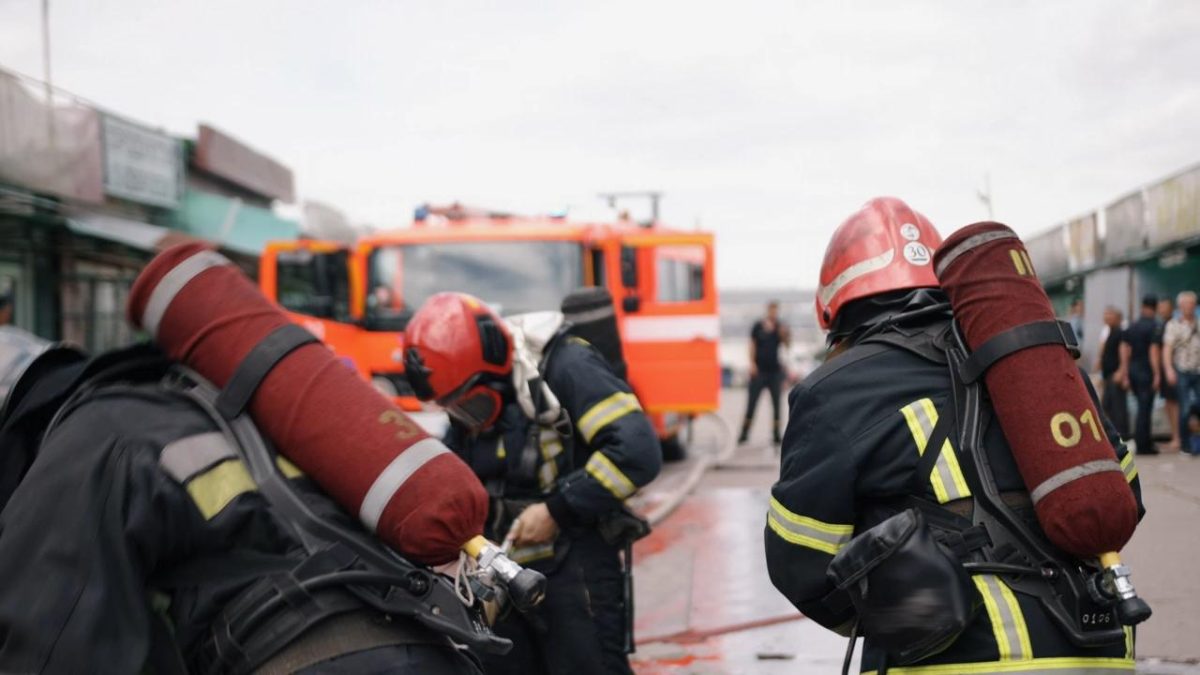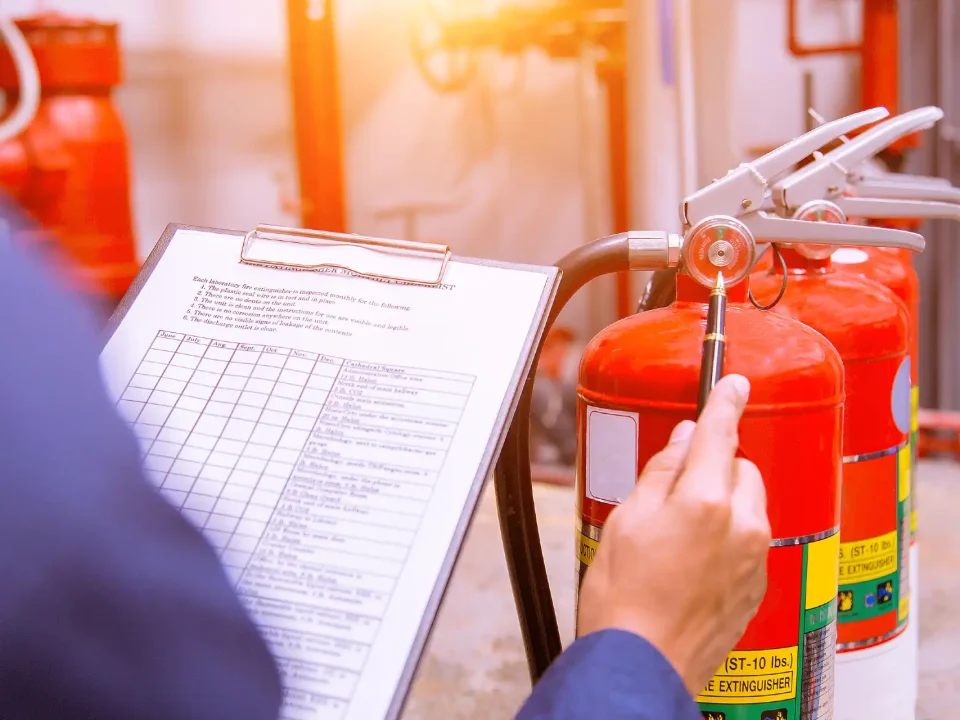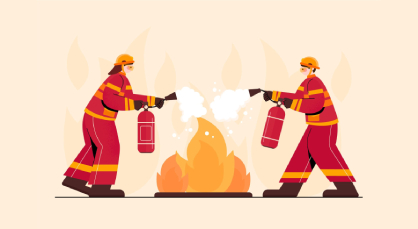Integrating Fire & Life Safety Audits into Your Building’s Safety Management Plan

HAZOP – Integrating HAZOP Findings into Safety Management Systems: From Analysis to Action
September 17, 2025
Maximizing Safety Performance: How Behaviour-Based Safety Implementation Can Drive Results
September 19, 2025Ensuring the safety of occupants within a building is paramount for any organization, and achieving this involves a multifaceted approach. One crucial aspect is conducting regular fire and life safety audits. These audits are designed to identify potential hazards, assess the effectiveness of existing safety measures, and recommend improvements where necessary. By integrating fire and life safety audits into your building’s broader safety management plan, you create a proactive system that addresses both present and potential risks.
This blog will outline how you can seamlessly integrate fire and life safety audits into your building’s safety management plan and why it is an essential component for both safety and compliance.
Understanding Fire and Life Safety Audits
A Fire Audit is a comprehensive evaluation of a building’s fire prevention, detection, and suppression systems. It also involves the review of evacuation plans, fire drills, and the readiness of emergency response teams. Additionally, a life safety audit covers aspects beyond fire, such as lighting, ventilation, and access to emergency exits, ensuring that in the event of any emergency, the building’s inhabitants can be evacuated quickly and safely.
Fire and life safety audits provide a clear understanding of how well your building complies with fire safety standards, as set by local regulations and international best practices. They also help uncover hidden risks that could escalate in the event of an emergency, giving building managers a clear roadmap to enhance safety.
The Role of Fire Audits in Your Safety Management Plan
Safety management plans are holistic strategies that ensure the safe operation and maintenance of buildings, incorporating policies, training, and emergency response mechanisms. By integrating fire audits into your safety management plan, you ensure that fire safety measures are regularly evaluated, maintained, and updated according to evolving risks and technologies.
Here are some key reasons why integrating fire audits is crucial:
- Compliance: Regular fire audits ensure compliance with legal fire safety standards. Non-compliance can result in hefty fines, lawsuits, or in severe cases, operational shutdowns.
- Risk Mitigation: A fire audit identifies risks, such as faulty fire alarms, blocked emergency exits, or outdated fire suppression systems. These issues can be addressed immediately, minimizing the chances of fire incidents.
- Cost Efficiency: While fire safety investments might seem expensive initially, they are cost-effective in the long run. Preventive maintenance and system upgrades identified during a fire audit can save you from massive property losses and legal liabilities.
- Improved Emergency Response: Fire audits often uncover gaps in evacuation procedures or emergency response systems. Rectifying these gaps ensures that your building occupants can evacuate safely and efficiently in an emergency.
Steps to Integrate Fire and Life Safety Audits
- Initial Assessment and PlanningStart by conducting an initial fire and life safety assessment to understand the current status of safety in your building. This will serve as the baseline for all future audits. Create a timeline that incorporates regular fire and life safety audits, typically on an annual basis, though high-risk environments may require more frequent reviews.Work with a qualified fire safety consultant or audit firm to plan your audits. They can help customize the audit checklist to meet the specific needs of your building, considering its size, usage, and occupancy.
- Assign Roles and ResponsibilitiesSuccessful integration of fire and life safety audits into your safety management plan requires clearly defined roles. Assign specific responsibilities to your team members, ensuring that everyone understands their role in both the audit process and in implementing corrective measures afterward. Include building managers, safety officers, and maintenance staff in the planning and execution phases.
- Conduct the AuditOnce you have a plan in place, it’s time to conduct the audit. A typical fire and life safety audit will evaluate:
- Fire alarms and detection systems
- Sprinkler systems and other fire suppression methods
- Emergency lighting and signage
- Evacuation plans and fire drills
- Accessibility of emergency exits
- The integrity of structural fireproofing materials
- Compliance with relevant fire safety codes and standards
- Analyze the Audit ReportAfter the audit is complete, the findings will be compiled into a detailed report. The report will highlight areas of non-compliance, potential hazards, and recommended actions. Analyze this report thoroughly and categorize the findings based on urgency.For instance:
- High-priority issues: These are immediate risks, such as malfunctioning fire alarms or blocked emergency exits, which need to be addressed urgently.
- Medium-priority issues: These involve improvements to existing systems, such as upgrading old fire suppression equipment.
- Low-priority issues: These are non-urgent recommendations, such as optimizing fire evacuation routes for faster exit times.
- Implement Corrective MeasuresOnce you’ve prioritized the issues, take immediate steps to rectify high-priority risks. Coordinate with your building’s maintenance team, contractors, or vendors to resolve the problems identified during the audit. Create a plan for addressing medium- and low-priority issues over time.
- Train and Educate Building OccupantsOne of the most critical aspects of integrating fire and life safety audits into your safety management plan is ensuring that everyone in the building is aware of their role in an emergency. This involves regular training sessions for building occupants, staff, and emergency response teams.Incorporating Process Safety Management Training can enhance this step by offering staff a clear understanding of the specific hazards in your building and the best practices for mitigating those hazards. This training ensures that employees are prepared to act efficiently during an emergency.Regular fire drills should also be part of your safety management plan. These exercises ensure that evacuation plans are practical and that occupants are familiar with the quickest escape routes.
- Ongoing Monitoring and Continuous ImprovementSafety is not a one-time effort but a continuous process. After the initial integration of fire and life safety audits, you need to regularly monitor the safety systems and conduct follow-up audits. Continuous improvement is key, so adjust your safety management plan as new risks emerge or regulations change.You might also consider integrating additional safety strategies, such as BBS Safety (Behavior-Based Safety), which focuses on improving safety behaviors among staff. By promoting safe behaviors, you further reduce the risk of human error during emergencies.
Conclusion
Integrating fire and life safety audits into your building’s safety management plan is essential for ensuring the well-being of all occupants and maintaining compliance with safety regulations. These audits provide a structured approach to identifying and mitigating risks, ensuring that your building is prepared for any emergency.
By conducting regular audits, implementing corrective measures, and educating building occupants through training programs like Process Safety Management Training, you can create a robust safety culture within your building. A proactive approach to fire and life safety audits not only protects lives but also reduces financial and operational risks for your organization.




